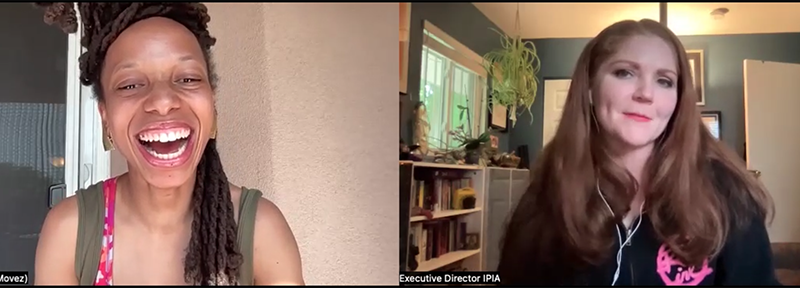[memberonly level=“Group Membership for Businesses of 2-5 individuals, Student, Individual or Solo-Preneur”] This workshop was…

5 Tips to Keep Your Pole Business Financially Healthy
No matter how much we love pole, our businesses are only sustainable if they sustain us. That means our businesses need to be profitable enough for us to make money, pay our staff, and continue to invest in our business. If you’re not sure about your business’s financial health, answering “yes” to any of these questions is a red flag we need to pay attention to:
- Is your business bank balance at or close to 0 more often than not?
- Have you been caught by a surprise tax bill and had to play “money-jenga” to keep things afloat?
- Does looking at your bank balance fill you with dread?
- Are you financially OK as long as that one thing goes well or if you pay that one (or more!) bill(s) late?
- Have you skipped paying yourself in favor of paying your team or your vendors?
Money worries are far from a shameful secret. They are a very real part of starting and running a business for many pole-preneurs. Fortunately, there are steps we can take to make sure our pole business is financially thriving.
Check out this list of five foundational tips to help you get on the right track!
1. Read (or Listen to) the book Profit First
If you’re not a trained accountant, profit can be a slightly meaningless concept. Fortunately Mike Michalowicz, author of Profit First, is on a mission to end entrepreneurial poverty and has created a system that supports business owners no matter how much they turn over. The premise is this:
Usually, we manage our business finances like this:
Income – expenses = profit
Profit First suggests we manage it like this:
Income – profit = expenses
Of course, there’s more to Profit First than simple description, but this process works because it places an upper limit on our operating costs and makes sure we prioritize what we need to earn from our businesses. If you do nothing else to support your finances this year, read Profit First and let us know how you apply it to your pole business!
2. Pay Yourself
This is more like #1B, because a huge part of Profit First is making sure you pay yourself. This is so important, we wrote a whole other post about it! That means you are taken care of because the business needs you to be financially sound and secure. If you’re not paying yourself it’s time to look at why, and asking the following questions could help get more cash coming your way:
- Are your operating costs too high?
- Are your prices too low?
- Is your marketing effective?
- Is your business a startup? Could you seek additional funding or income to support you while it grows?
- Are you wasting money on services you don’t use?
Sometimes the answer to these questions is tricky (see tip #5), but when we look directly at our cash flow troubles we can start to find real solutions to them. If you’re not paying yourself, that’s a sign to check in with your business finances and see if you need to make a change.
| 💡 Paying yourself doesn’t just mean scraping by. It means contributing to your savings and paying into your retirement. These are non-optional costs you have as a business owner and it’s time to prioritize them! |
3. Grow Your Business Emergency Fund
We can’t predict every expense that’s coming our way, and sometimes emergencies will happen—it’s all part of running a business! When something goes wrong it’s stressful enough without wondering how you’ll pay to fix it, so your emergency fund is the “oxygen-mask” for your stress levels. This is about keeping you sane and your business safe— a very worthwhile use of funds, even if that does mean that new aerial rig has to wait until summer.
If your emergency fund is always eaten up by annual expenses you didn’t budget for, it’s time for your second not-an-accountant-safe money book: You Need a Budget by Jesse Mecham. There is an online app that helps you implement the practices in the book, but you don’t need to subscribe to get the benefit.
There are four rules in You Need a Budget, and the second is “embrace your true expenses”. That means splitting your annual payments out into monthly amounts that you keep in your account until you actually need to pay the expense.
4. Measure trends and changes over time—including tracking industry pricing
Remember the early lockdown online fitness boom? That was a rapid change that saw an entire industry turn upside down. Now that gyms are open again, how much demand is there for home workout equipment? And how much is being sold off second hand?
There’s no doubt businesses saw a boom, followed by a lull, and if they had scaled up with the boom then they may have landed with a thump on the other side, quickly finding their bank accounts empty and their business in trouble.
That’s why we want to track industry trends and pricing over time, learning the seasonal trends in our business revenue and looking for consistent year-on-year growth as a sure sign to scale or make big changes.
5. Make the Hard Decisions
If you’ve found yourself in an unstable financial position, it’s time to be the badass pole business owner you are and make the hard decisions.
Sometimes our operating costs are too high. Solving that could mean reducing staff hours, canceling nice-but-not-essential services, or even changing our offers to track the industry climate. No one wants to be in this position, but it’s far better to make the call than living in financial instability waiting for it to be fixed—we know because we’ve been there too.
There is no shame in scaling back, changing, or closing a company if the numbers don’t add up. It’s all part of responsible business ownership, and something many of us will experience at some point in our pole business careers!
Keeping your pole-related business financially healthy can be hard but is not impossible! Let us know what other tips you’ve used in your business.



